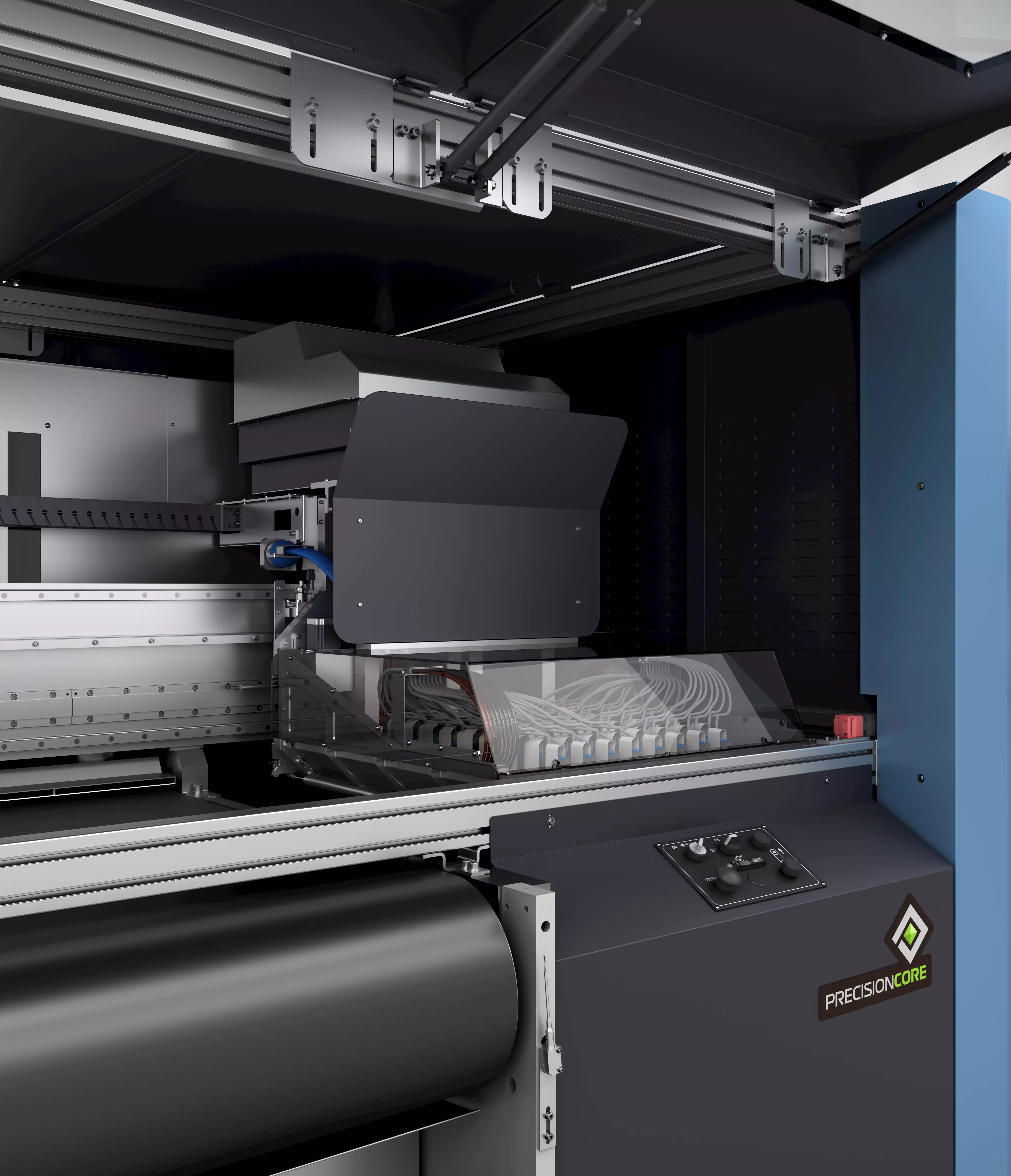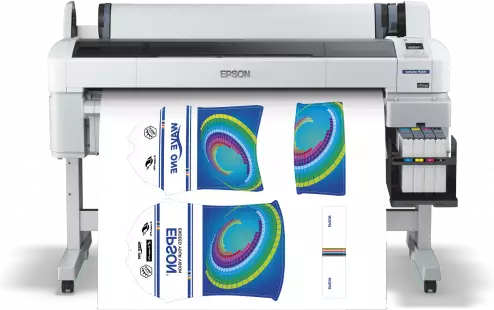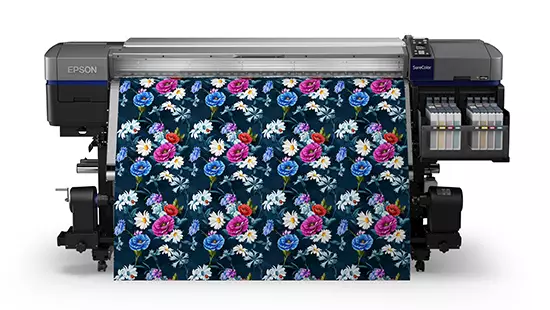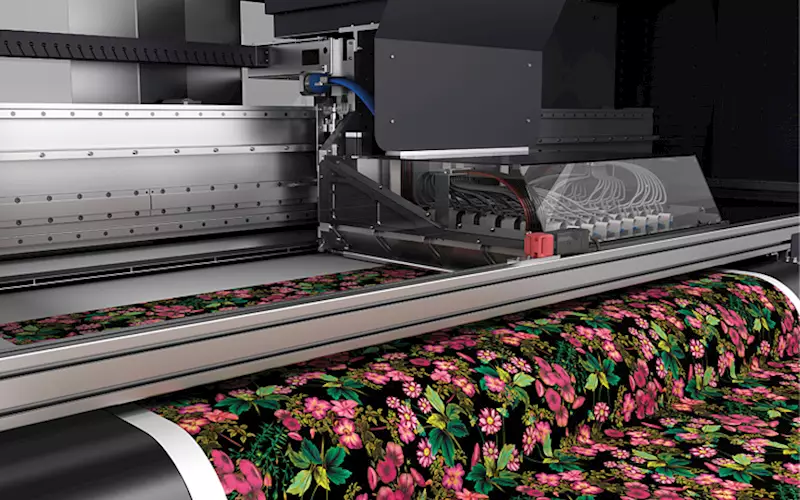Pamex 2020: Epson - A market leader in textile printing
Satyanarayana P talks to PrintWeek about Epson’s success due to PrecisionCore and how it has succeeded in achieving more than 50% market share in the Indian market
09 Jan 2020 | By Abhishek Muralidharan
Epson’s textile industry presence
Epson offers three ranges of printers for the textile industry - dye sublimation, direct to garment (DTG) and direct to fabric (DTF). Satyanarayana P, director of LFP, projectors and robotics, Epson India says, "Printing onto textiles is one of the fastest growing and most exciting areas of the digital printing market. Our DTG and DTF devices are printing directly on garments at 400 sq/metre hour at 600 x 600 dpi." In dye sublimation, the print is transferred from the paper to garment. In DTG and DTF, as the name suggests, printing is directly carried out on to the garments or the fabric.
In 2018, Epson launched the Monna Lisa which runs on pigment inks. Satyanarayana says, this area is "growing" due to its economic benefits and a more environment-friendly process. Satyanarayana states, the printer, which is available in three different widths – 1.8m, 2.2m and 3.2m – is cheaper than the existing Evo Tre model with 32 printheads.

"The market is changing direction very fast. 10 years ago, the requests from the market were for speed and production, but customers now want flexibility and a good trade-off between speed and quality," he said.
Monna Lisa has 16 installations in India. The main reason, according to Satyanarayana is, specialist applications and creativity. The Indian market can see the benefits Epson can offer by having control of the print engine, printhead and inks and how open minds and R&D can help us bring new ideas to the development of printers."

The SureColor journey
In 2013, Epson rolled out its first dye sublimation printer for the Indian market, SureColor F6070 (44-inch), under the F-series. Later, Epson launched SureColor SC-F6270 (44-inch) and SureColor SC-F9330 (64-inch). Both the models have become Epson’s flagship machines in the dye-sublimation segment, as 98-99% of the company’s market share in the segment, comes from them. Epson had also introduced F-7270, which has a smaller market size as compared to the flagship models.
Epson has installed close 1,300 printers in the market since the launch of the F-series. In 2018, Epson installed around 230 printers. As of 2019, it holds a market share of close to 50% and hopes to achieve 62% market share by 2021.
The 44-inch model holds about 55% of market share and the 64-inches model holds about 45% of market share. "Because of the width and the price competitiveness due to the dual head technology, the 64-inch model is comparatively expensive. Printers who are having lesser jobs opt for the 64-inch printer."
Aside from the ink system, all other technical specifications on these devices produce 1,440x1,440dpi output at up to 95.1sqm/hr in single-pass banner mode and at up to 12.5sqm/hr in eight-pass film modes. The machines can run nine or 10 colours: CMYK, light cyan, light magenta, light black, red and orange, and can also be configured to use white or metallic silver.
They can print on a wide range of media up to 1mm thick, from clear film and photographic paper to wallpaper, canvas and vinyl, and are suited to large scale signage and displays, POS applications and billboards, back/front-lit signage and car wrapping. Satyanarayana says, "Digital printing has opened up a host of possibilities, particularly around interior decorating. Wall coverings, art, window and floor displays, and much more are available to architects and designers."
PrecisionCore technology
The Epson trump card for most of wide format digital print technology is: Epson's PrecisionCore TFP printheads. These are supplied with the Epson Edge RIP software and the LFP Accounting Tool, which Satyanarayana said provides for accurate job costing data.
The SureColor SC-F6270 (44-inch) and SureColor SC-F9330 use a PrecisionCore thin film printing (TFP) printhead technology. It enables a colder ink transfer. Satyanarayana says, "Generally, in dye-sublimation, the ink is heated and transferred on to the substrate. While heating, the ink tends to lose its properties and also becomes difficult to control. With the PrecisionCore technology we are able to take control of the droplet size as much as from 3 to 10 pico litres. We use the best combination so that we provide vibrancy in the colour output."

The SureColor F6070 model prints close to 63 sqm/hour and SC-F9330, due to its dual printhead prints at 108 sqm/hour. The dual helps doubling the printing speed.
In addition, Epson provides its standard Raster Image Processing (RIP) software for colour management which ensures the vibrancy of the color that is required for the customer.
Ink and the substrate
Epson develops eco-friendly inks at its head office in Japan. The inks are specifically developed to ensure optimum quality, output and the colour consistency on the Epson range of printers. They are certified by textile management specialist, Ecotex.
According to Satyanarayana Epson’s dye-sublimation range of printers are a completely eco-friendly solution it provides chemical-free inks and also the substrate that the machines print on is, usually, cloth, which is a recyclable material.
Demystifying the printing process, he says, “Textile is a polyester-based industry. During the printing process, the image diffuses to the polyester fabric from paper by heat transfer. Through the heat transfer equipment, the ink from the paper will go into the fabric and probably get into the fabric thoroughly. This enables the substrate to withstand multiple washes. Our printers can print on 100% polyester or even blended polyester which comprises of at least 50% polyester.”
Epson's insight on textile industry
The textile industry in India operates in clusters. For instance, Tirupur is a cluster of numerous textile printers. Surat, Tirupur and Ludhiana, are the leading areas as far as dye sublimation printing businesses is concerned, says Satyanarayana.
Surat houses approximately 50% of the Indian dye sublimation printing. "In Surat, we have close to 35 printers installation with one customer. This shows the confidence of the customer on the follow up, and then probably the product’s prowess."

Epson has close to 300 centres across India. “Within 50 to 70 kilometers of vicinity you will find an Epson centre, such is our outreach. And as far as the dye-sublimation is concerned we have a partner who is exclusively supporting us in its service. They have a pan India presence.”
The future is digital
Satyanarana foresees the textile industry to be a growing market as it is gaining traction in the eCommerce industry. With the increase in personalisation and customisation of T-shirts, Epson expects a boom in the purchase of garments online.
A classic example of this was seen during the Indian Premier League (IPL), "Some of these franchises use dye- sublimation printed T-shirts. Such things help the product grow and enable us to expand in the market."
He explains, "The new breed of devices can improve the colour gamut and gives the print company many more possibilities in terms of design, printing quality and uniformity." A continuous ink recirculation system lets users print with a wider variety of inks while reducing purging and maintenance. Meanwhile, a simplified printhead design and proprietary electronics on the printer reduce setup time and streamline maintenance tasks.

At a print show, the PrintWeek saw how the printer can be used in tandem with the recently-launched EFI Fiery Textile Bundle, which combines technologies for efficient textile design and file preparation with the Fiery ProServer digital front-end (DFE) for professional colour management and high-quality RIP output. And so, the machine can also be used with EFI’s Optitex integrated 2D/3D digital software for the fashion and textile industry that enables companies to quickly create 3D digital garments.
Satyanarayana says, "Epson tries to give textile companies in India and overseas a way to eliminate the excess water usage, chemistry waste and high operating costs of production. The possibilities are infinite for garments and fashion, as well as the home décor segment of the market."
Epson at Pamex

Pratik Mhasawade of Epson and Sanjay Dummi of Universal Media with the newly launched SureColor SC 60670L
Epson highlighted its newly launched SureColor SC-S60670L at Pamex 2020. The SureColor SC-S60607L printer combines Epson’s dual PrecisionCore thin film printing (TFP) printhead with its UltraChrome GS3 ink technology, which can incorporate large capacity of inks.
The company also announced the sale of the press to Universal Media. This device has already notched five installations across India.

According to Epson, the machine offers high optical density and an improved resistance along with colour accuracy. The application segments include backlit display, indoor posters, wallpaper printing, and indoor and outdoor graphics, among others.
The digital imaging specialists also highlighted its F2130 garment printing kit, T5430/T5130 CAD solution, and P7000 packaging proofing equipment.














 See All
See All